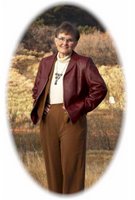JK: Fiction and Historical Details, Part 1

Because I write historical novels, I’m often asked to speak to historical societies who want to know what I’ve “imagined” and what “facts” are true. I’ve really appreciated theologian and novelist Frederick Buechner’s account of fiction to help explain that. He notes that the word comes from the Latin meaning to “fashion, shape or feign or imagine.” Fiction may not tell the truth the way a photograph does; but we can “feign” truth the way a good painting does, offering depth and insight into the character or experience of that person. That’s what I try to do when I write historical fiction, offer a pair of glasses through which a contemporary person might gain wisdom from the lives of those who’ve gone before us.
I do write about actual people and that might make how I work a little different than those who imagine all their characters and events and historical plot. Some of my plot is worked out for me within the historical context; many of the characters are people who lived and breathed and whose ancestors have shared with me letters and family Bibles and stories handed down through the generations. I have what I call “shared knowings” but then I have to fill in the blanks.
Those who imagine all their characters and their movement through their lives still have to pay attention to the shared knowings. If they start the Civil War at a different time than historically agreed upon, readers will look at their work with a skeptical eye and might question other aspects of the history – and the truth of their feigning—as well. As writers, we want those readers to trust what we’re telling them so they stay in the story.
We both must tend to details. I love the research and discovery. But I have to work to manage details as they can overwhelm a story (and me!). That’s why I don’t describe everything I know about my character or how they look or dress within the first few pages or chapters. I give just enough to anchor the reader but I don’t want them to bog down in the frilliness of their petticoat or the height of the antagonist’s hat unless it has something to do with later action.
Yet enough details are critical to create the context and ambiance wanted for the characters to move and grow and change within. Which detail to leave out and which to include often takes up much of my revision time. What were they talking about over dinner? Did they call the evening meal dinner or was it supper or something else entirely? How did they get their news?
Did a 1860s family in the west know about the impending war in the East? What of their prejudices and biases and faith had they brought with them and how did it change once they arrived?
Sometimes I have a character comment on an historical detail as a way of cementing it in a reader’s mind. Sometimes the detail is in her action such as when she pounds the butter churn so hard the lid on the salt box falls off from its shelf. The reader knows the character is upset, can see the salt box (not a salt shaker as we know it) and gets a glimpse of the character at work. All details that expand the story and the character, I hope!
Jane Kirkpatrick writes historical fiction from her home in the west. www.jkbooks.com.



0 Comments:
Post a Comment
<< Home